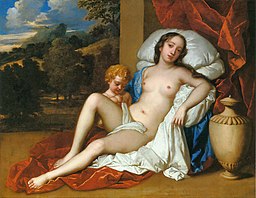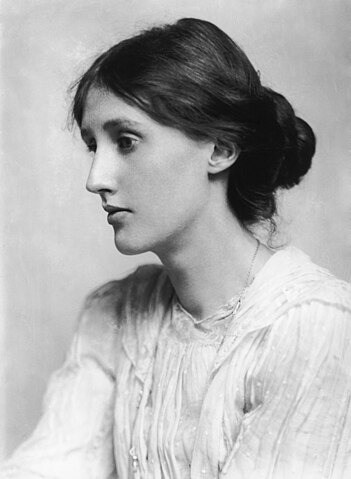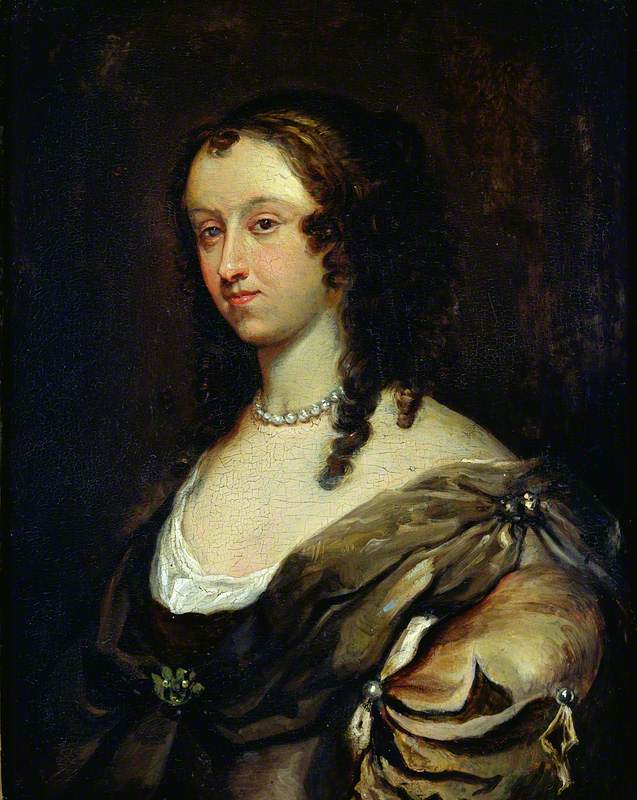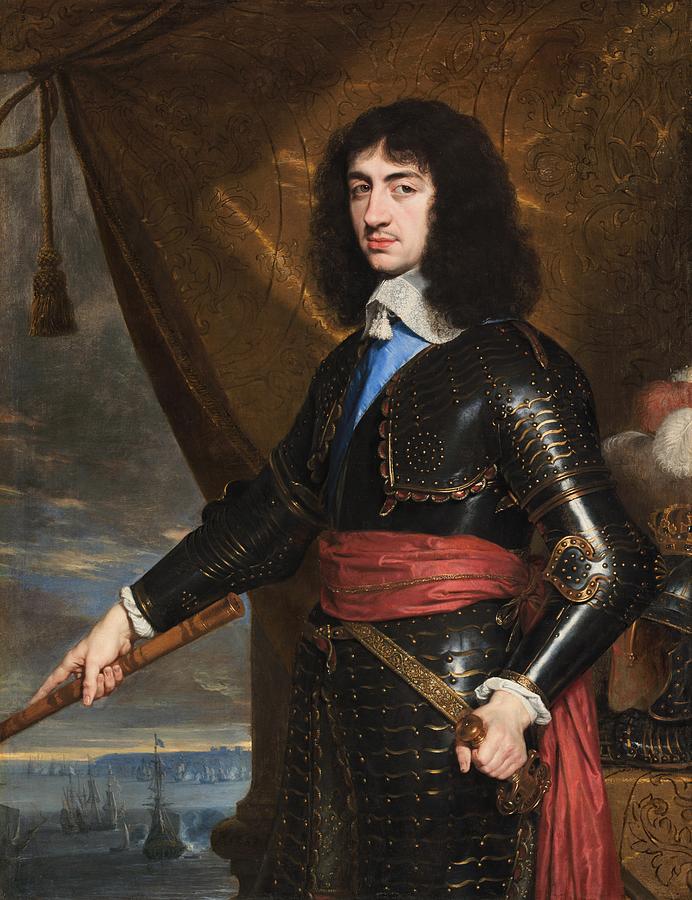So who is Aphra Behn? And what does attempting to answer that question reveal about us?
Behn was a playwright, poet, translator; she was a woman in a world of men, a staunch Royalist, a spy, and a scarlet woman condemned for loose morals. She was also the first woman in England to identify herself as a professional writer. She wrote to the occasion, and she wrote to make money. There has been a consistent tendency to see Aphra Behn as a personal phenomenon, rather than as the author of a series of works that are interesting in their own right. It's important to state at the start that even now we know almost nothing for certain about Behn's life.
As a woman, she was excluded from the sorts of institutions from which historians usually glean their records, such as Oxford and Cambridge, the Inns of Court, or the Middle Temple. If she'd been an aristocrat, there might have been records surviving at her country seat. If she'd been a religious non-conformist, she might have recorded her thoughts and ideas about her inner life in a spiritual journal, or diary, as so many women did. But as neither a man, nor an aristocrat, nor a nonconformist, she proves peculiarly resistant to biographical recovery.
What we do know is that she was born in England, possibly to a barber and a wet-nurse living in Kent. In her youth she undertook spying missions for Charles II, in Antwerp, and probably visited the colony of Surinam. She returned to London in the late 1660s, and began to make a living by writing plays for the Duke's Theatre. These plays became increasingly political in response to contemporary events, and in particular, the public hysteria over the Popish Plot.
But as the public appetite for drama decreased in the early 1680s, Behn began to produce prose fiction, poetry and translations. At some point in these years she had relationships with two men called Will Scott and John Hoyle, who may or may not be represented in her fictional and poetic works. She died in 1689. For a more detailed biography (no doubt one prone to the same sort of prejudicial influence to be discussed below), see the Great Writers Inspire essay on Behn.
Because of the lack of reliable bibliographical information and because of the fascination Behn holds as an individual rather than as the creator of a body of literary work, Behn has been co-opted into a range of political agendas in the past. There have been six biographies written since 1948, and the recent explosion of critical interest in Behn will surely bring more. Far from hindering biographers, the lack of available information about Aphra Behn's life has actually enabled them to construct her along their own lines.
Response to her Death
When Aphra Behn died in April 1689, her literary reputation was considerable, despite the fact that she was politically out of favour with the new monarchs, William and Mary. She was buried in Westminster Abbey, which had recently become the resting place of honour for poets. Only a few days after her death the anonymous An Elegy Upon the Death of Mrs A Behn, the Incomparable Astraea. was published. The author, 'a young lady of quality' starts by praising Behn as a female champion, asking:
"Who now of all the inspired Race,
Shall take Orinda's Place?
Or who the Hero's Fame shall raise?
Who now shall fill the Vacant Throne?"
She then presents the loss of Astraea as a triumph for men, who can now reassert their rule over women:
"Let all our Hopes despair and dye,
Our Sex for ever shall neglected lye;
Aspiring Man has now regain'd the Sway,
To them we've lost the Dismal Day..."
However, along with this lament for the 'female champion' comes the recognition that while Behn might have presented an enabling model for women writers, her lack of virtue in her private life compromised this: the elegist says:
'twas pity that she practis'd what she taught'.
Behn is two things here: a champion of women, and a writer whose literary skill in describing the arts of love in her poetry and fiction is inextricably, and problematically, linked to her personal sexual experience. These two emphases are both rooted in a sense of Behn not as a constructor of imaginative fiction but as a model: an exemplar.
1696: Gildon and Behn as a Libertine
We can see the beginnings of the blurring of life and work with Behn's first biography, 'Memoirs on the Life of Mrs Behn. By a Gentlewoman of her Acquaintance', published in 1696 and probably written by the hack writer and literary forgerer Charles Gildon. The 'Memoirs' are a strange combination of biographical detail and fictional narrative: they are woven into a story which presents Mrs Behn as amorous adventuress, and they draw on a combination of bits of her fiction and fragments of her letters to concoct an account of her exploits in Antwerp and Surinam that ultimately encouraged readers to identify Behn with the heroines of her prose fiction.

The Memoirs were published as the preface to a collected edition of Behn's prose works: and in effect, they capitalized on the sexiness of the woman to sell her works. Behn's adult life had conveniently spanned precisely the reigns of Charles II and James II, and in presenting her as sexual libertine, her biographer inevitably linked her to the glittering and heady world of the Restoration court.
But from the 1690s onwards attitudes towards the Restoration became more and more critical of its excess and libertinism. Behn came to represent the licentiousness that readers were keen to put behind them. By the end of the century, moral disapproval had forced Behn out of the literary canon. Both male and female anthologists and historians of women routinely condemned her.
Early 1900s: The Bloomsbury Group and Behn as a Woman
It was not until the early twentieth century that things began to change. The Bloomsbury members, Vita Sackville-West and Virginia Woolf were the leading exponents in a revival of the Restoration writer. The prime emphasis in Woolf and Sackville-West's work was on Behn's status as the first professional woman writer. Her life continued to eclipse her work because of a critical eagerness to adopt her professionalism as a symbol of early feminism. Vita Sackville-West's short biography of Behn, called Aphra Behn: The Incomparable Astraea, appeared in 1927. Rather than lament the absence of knowledge of her subject's early life, Sackville-West invents it, envisaging her being carried through Kentish hop fields, or bantering in her doorway with impoverished Grub Street hacks. For Sackville-West, Behn is a novelist who would have been greater had she abandoned the models of French romance that she copied from Madame de Scudery, and attempted to use her homely idiom to produce fiction closer to the contemporary realism of Daniel Defoe. The emphasis in the account of her work is not so much what she did achieve, but what she might have done.
We find a similar argument about Behn's potential, rather than her achievement, in Virginia Woolf's enormously influential essay on Behn in Chapter 4 of A Room of One's Own (1929). Woolf declares that 'All women together ought to let flowers fall upon the tomb of Aphra Behn, for it was she who earned them the right to speak their minds.' Again, Behn is primarily significant for the fact that she wrote as a professional, not for what she wrote. Like Sackville-West's Behn, Woolf's version is presented as rather coarse: she is a fascinating woman, rather than an artist, who could not attain true literary excellence because of her class-bound need to make a living. Had she abstained from her hackwork, she might have stood more chance of becoming a great female writer.
This means that the weight of the biographical method of both Sackville-West and Woolf lies not so much in detailing what was, but on emphasizing their own roles in the speculative reconstruction of an alternative literary history.
1948: Woodcock and Behn as a Revolutionary
The first full-length biography of Behn to appear came in 1948, written by George Woodcock. It was entitled The Incomparable Aphra. Once again, it is what Behn represents as a figure, rather than the artistry of her writings, that provides the basis of her biographer's claims. Woodcock was an anarchist. Woodcock constructs Behn as an impassioned and committed modern revolutionary, an advocate for a social and moral freedom that he finds radical in her day and ours.
Behn's established Tory politics, even though they were based on a time-honoured allegiance to king and aristocracy and a disdain for populist politics, did not substantially trouble Woodcock's thesis. Behn's revolutionary tendencies could be seen in her work, if they were not immediately apparent in her life: Woodcock was one of a line of critics to read Oroonoko as an abolitionist work that fully established Behn's libertarian credentials, while he stressed that the poverty of her final years was a testament to her unwillingness to compromise her feminism: rather than using her feminine charms to tap her admirers for support, she chose to attempt to provide her own living.

His biography was governed by the thesis that adherence to social and political progress makes for aesthetic worth. In proving Behn to be not only a substantial writer but a political radical, he provided further evidence of this belief, but he also vindicated his own valuing of a previously obscure and minor writer.
1980: Goreau and Behn as a Martyr
In Angeline Goreau's 1980 biography of Behn, Reconstructing Aphra: A Social Biography of Aphra Behn, Behn's biography symbolizes the lives of feminists in 1980, who, like Goreau, long to be free, and must suffer because of that desire. The minimal facts that are available about Behn's life need to be reconstructed to form a tale that projects the predicament of the modern feminist scholar onto earlier women writers. Both the bawdy and self-reliant Aphra Behn imagined by the Bloomsburies and the confident radical of Woodman's work have been replaced: Behn is depicted as a defensive woman, beset by critics, who must suffer for her art.
Here, the myth of Aphra Behn as suffering heroine, struggling to publish in the face of a hostile world, offers a form of retelling of Goreau's own life story. Goreau needed to generate a tradition that would valorize her project, and so by constructing the oppressed Behn, she makes this tradition visible, and locates her own experience, and resentment of the hostile and male-dominated literary academy within an authenticated history of painful and unjustified attacks on women writers.
1996: Todd and Behn as the Political Agent
A later biography of Behn Behn was Janet Todd's 1996 book, entitled The Secret Life of Aphra Behn. By the mid-90s, feminist criticism had moved beyond the need to posit an absolute identification between the gender politics of early women writers, and those of the feminist scholars that were writing about them. Todd says in her introduction that her version of Behn may be too political for some. Here she means not political in terms of the libertarianism that Woodcock believed that he shared with Behn, or the gender wars with which Goreau identified, but political in terms of Behn's own involvement in contemporary politics. Todd places great emphasis on Behn's early spying activities, and on the networks of Tory intrigue to which Behn was connected.
But this 'historicising' of Behn once again operates as part of a wider set of concerns. In the 1990s criticism of Behn's work was collected into two collections of essays, one edited by Heidi Hutner and the other by Janet Todd. Broadly speaking, the Hutner book is critical and theoretical, and includes the work of North American critics. In contrast, the essays in Todd's collection, mainly by British academics, tend to set works in their historical and theatrical context, emphasizing Behn's use of contemporary political rhetoric, or staging devices.
So in the context of this division of emphasis in recent Anglo-American criticism, Todd's construction of the 'political' Behn is not an unpartisan contribution to current debate. In presenting Behn as a Tory polemicist who was much engaged with the specific power struggles of the 1670s and 80s, she offers a biographical justification for her own school of historical criticism on Behn.
Why is Behn so tempting to try and pin down?
It seems that analysis of Behn reveals more about her biographers than it does about the elusive writers, but this is perhaps because of Behn's writing choices. Through her manipulation of prose and personae and by playing with the extent of her self-identification with a narrator or character, Behn leads readers into positing exactly the kinds of equations between life and works that troubled her biographers.
The most famous example of this authorial self-revelation is in her use of the narrator in Oroonoko. In this fiction, we see Behn clearly inserting herself into the narrative, as both agent and observer. She begins the account by declaring that:
"I was myself an Eye-witness to a great Part of what you will find here set down; and what I could not be Witness of, I receiv'd from the Mouth of the Chief Actor in this History..."
From this point onwards it becomes increasingly unclear at what point the 'I' is the historical Behn, and at what point she is a fictional persona. This becomes especially complex since her identification with the narrator is grounded partly in her exploitation of her public persona, her readers' awareness of her as 'that notorious woman playwright', and partly in her use of the story as a form of autobiography of her unknown early personal life.
At the very beginning of the account, the narrator describes the habits and costumes of the Native Americans, detailing in particular their use of exotic birds' feather to make headdresses. She adds to this:
"I had a set of these presented to me, and I gave 'em to the King's Theatre; it was the dress of the Indian Queen, infinitely admir'd by Persons of Quality; and was inimitable."

According to theatre historians, such a feathered headdress does indeed seem to have been used in the many heroic dramas set in the exotic New World. Behn wrote Oroonoko in 1688: her probable trip to Surinam, the location of Oroonoko, took place at the beginning of the 1660s. If she brought the feathers back with her in the late 1660s, the first readers of Oroonoko would probably have seen this feathered headdress in a range of theatrical productions over the 70s and 80s. So here the account in Oroonoko dovetails with the readers' actual knowledge of Behn and her theatrical world. The reference to the headdress adds authenticity to the account, and affirms the narrator's status as one and the same as the public playwright Aphra Behn whose plays and headdress they had seen at the Duke's Theatre.
We find a different sort of authorial stance when the narrator describes her time with Oroonoko and Imoinda. She says of this:
"I entertain'd him [Oroonoko] with the Lives of the Romans, and great Men, which charm'd him to my Company; and her [Imoinda] , with teaching her all the pretty Works that I was Mistress of; and telling her Stories of Nuns..."
This seems to identify the narrator with Aphra Behn, who had produced two stories of nuns in The Fair Jilt and The History of the Nun. But these stories were published after Oroonoko, in 1688 and 1689. So perhaps here the connection between narrator and author works as a sort of advertisement for her next pieces of prose fiction.
Behn plays with her readers, constructing her narrator so that she variously represents a fictional narrative device, the known public persona of Behn the playwright, a private autobiography, and form of authorial self-advertisement. Her juggling of this unsettling combination of display, revelation, and mask problematises the relationship between fact and fiction, life and works throughout her work, and explains the drive for biographers not just to state the facts about her works, but also to make judgments about her life.
See also:
- Aphra Behn and the Restoration Theatre - by Abigail Williams (ed. Kate O'Connor)
- Aphra Behn and Political Culture - by Abigail Williams (ed. Kate O'Connor)
- Aphra Behn and Poetic Culture - by Abigail Williams (ed. Kate O'Connor)



